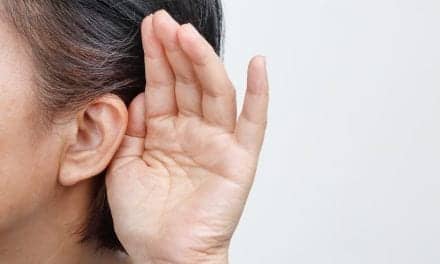Canadian researchers have determined that blind people who are good at echolocation can use the skill for more than navigating their environment—they can use echoes to “see” objects.
According to research done by Melvyn A. Goodale, PhD, director of the Brain and Mind Institute at the University of Western Ontario, Canada in collaboration with colleagues around the world, echolocation in some blind individuals is a full form of sensory substitution, and blind people who are echolocation experts recruit regions of the brain normally associated with visual perception when making echo-based assessments of objects. Goodale’s latest research results were presented at the 9th Annual Canadian Neuroscience Meeting, hosted by the Canadian Association for Neuroscience (CAN) on May 24th 2015 in Vancouver, British Columbia.
In an announcement from CAN, Dr Goodale explained that certain blind individuals have the ability to use echoes from tongue or finger clicks to recognize objects in the distance, and some use echolocation as a replacement for vision.
“Our experiments show that echolocation is not just a tool to help visually-impaired individuals navigate their environment, but can act as an effective sensory replacement for vision, allowing them to recognize the shape, size, and material properties of objects,” said Goodale, who was the 2015 Presidential Lecturer at the CAN Meeting. “Remarkably, expert blind echolocators can tell whether something is hard or soft, dense or not, just by listening to the echoes bouncing back from that material.”
Goodale’s initial studies investigated how echolocators detect the shape and distance of objects, but his most recent studies have investigated how they perceive the material or “stuff” that different objects are made of. According to Goodale, just like multiple properties (size, expected weight, texture, composition) of an object assessed by visual cues are encoded in different brain regions, his recent research shows that the same is true of information obtained through the auditory cues provided by echolocation. Many of the same regions in the sighted brain that are used for the visual assessment of objects are recruited in the blind brain when objects are explored using echolocation.
People who are echolocators must rely on auditory cues that result from the echoes of the clicks they emit. Goodale’s recent studies have recorded the echoes produced by echolocator’s clicks on different materials (a blanket, foliage, and a whiteboard) and looked at the response these sounds produced in the brains of sighted people, of blind non-echolocators, and of blind echolocators. They used functional magnetic resonance imaging (fMRI) to view which brain regions were activated in these individuals.
According to the CAN announcement, these studies show that material-related signals activate a region of the brain called the parahippocampal cortex (PHC) in blind expert echolocators, but not in sighted people or blind non-echolocators. PHC activation is associated with scene perception in sighted individuals. Just as in sighted individuals using vision, the brain regions that play a critical role in processing the structure and geometry of objects are distinct from the brain regions that process the cues that signal the material properties of objects in blind echolocators. According to the researchers, some echolocators are proficient enough to use the ability to perform complex tasks such as riding a bicycle, or sinking a basketball.
Source: 9th Annual Canadian Neuroscience Meeting, Canadian Association for Neuroscience (CAN)
Photo credits: Canadian Association for Neuroscience (CAN); © Rocketclips, Inc. | Dreamstime.com




